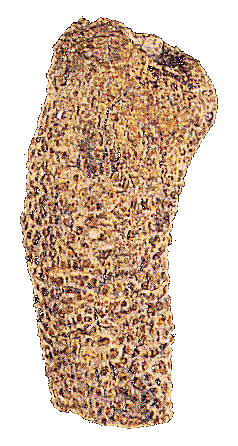
 |
Memebers of the group Calcarea are the only sponges that possess spicules composed of calcium carbonate. These spicules do not have hollow axial canals. The Calcarea first appears at the base of the Lower Cambrian and has persisted until the present. Greater than 100 fossil genera are known. Like the Hexactinellida and the Demospongia, the calcarean sponges were at their most diverse during the Cretaceous. Today, their diversity is greatest in the tropics, as is the case with most marine groups. They are predominantly found in shallow waters, though at least one species is known from a depth of 4,000 meters. The fossil record of the Calcarea indicates that it has always been more abundant in near-shore shallow water settings. |
Calcarea Systematics
The basal group of the Calcarea is the Heteractinida. The heteractinids are characterized by eight-rayed calcareous spicules, or derivative forms. They are known from the base of the Lower Cambrian. Heteractinids never achieved great diversity and were extinct by the end of the Paleozoic. The other two primary groups of calcarean sponges, the Calcinea and the Calcaronea, share a more recent common ancestor and are characterized by regular three-rayed and four-rayed spicules. The Calcinea is difficult to characterize and thus may be paraphyletic. The Calcaronea is more likely a monophyletic group of sponges since they share characteristic larvae and choanocytes, presumably due to common ancestry. The Calcinea is known from the Permian, while probable calcaronean fossils have been identified from the Cambrian. Both groups persist with many representatives in today's oceans.


